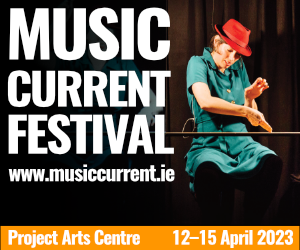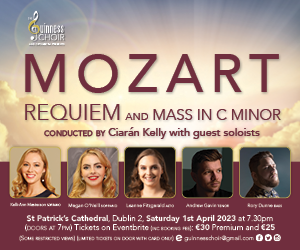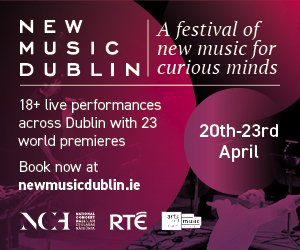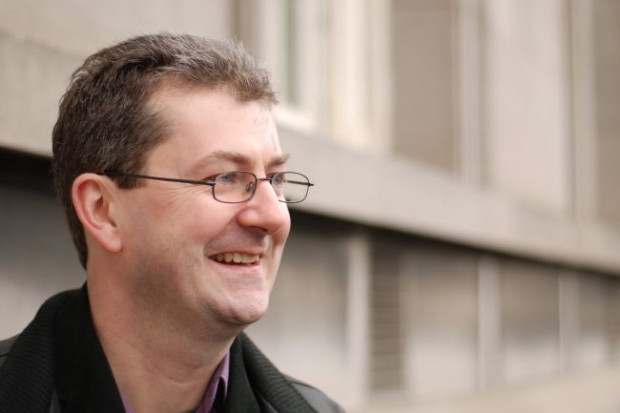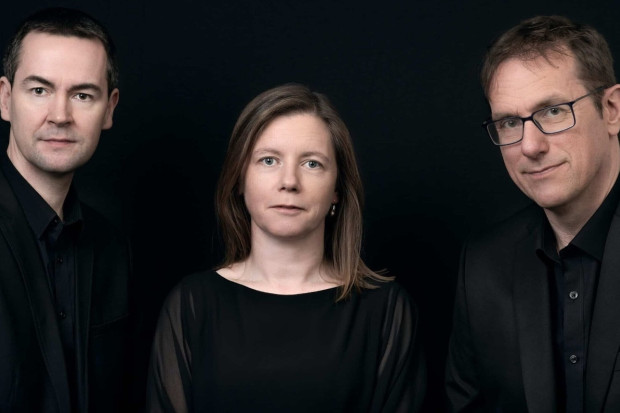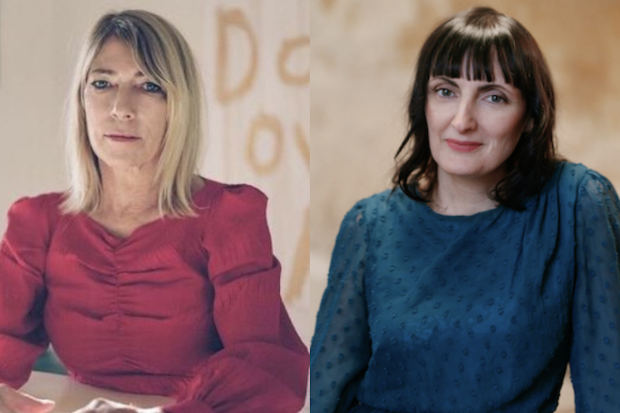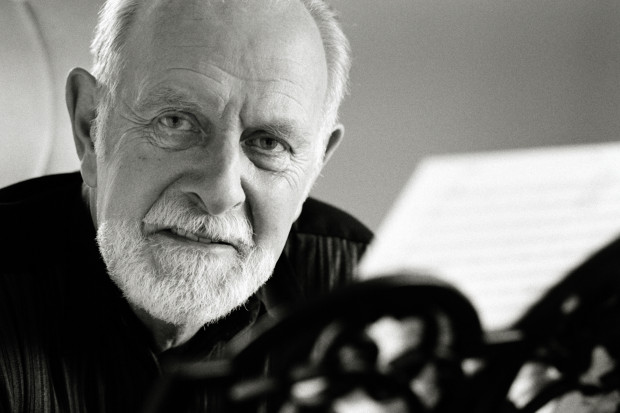
Kate Molleson
Unofficial Music History
Kate Molleson is a BBC Radio 3 broadcaster and journalist who has taught music journalism at Darmstadt and Dartington. Her book is a study of ten composers she admires but who she feels have been left out of official histories of the last century. The loose framework for the book was provided by a conversation with composer George E. Lewis who suggested ‘Choose some interesting composers who don’t make it into the mainstream history books. Tell their stories. Prove that they were all doing amazing stuff. Prove that they existed. Make your readers want to hear their music.’
Six of Molleson’s selection of composers are female and there is representation from across the globe including Mexico, Brazil, the Philippines, Ethiopia and New Zealand, as well as the US and Europe. The chosen ten are Julián Carrillo, Ruth Crawford Seeger, Walter Smetak, José Maceda, Galina Ustvolskaya, Emahoy Tsegué-Mariam Guèbru, Else Marie Pade, Muhal Richard Abrams, Éliane Radigue and Annea Lockwood.
Certainly, the inclusion of figures who are not from Europe and the US serves an important part of the function of the book. Paulo Costa Lima, who assisted Molleson’s research on Smetak, sees Western-centric musicology and the habitual celebration of centres over peripheries as ‘a colonialist enterprise renewed in the twentieth and twenty-first centuries’ rather than the result of laziness or lack of curiosity. Molleson takes up this idea in a punchy introduction. She rapidly debunks the right-wing so-called ‘culture warriors’ who insist that widening the repertoire or broadening the teaching curriculum means eliminating Mozart or Beethoven. Molleson’s agenda, however, is not about any dutiful box ticking and she takes particular aim at orchestras and institutions that aim to ‘redress the demographic balance of their repertoire, plonking works by a handful of “diverse” composers into programmes without really considering their context, or their appropriate performance practices, or whether those particular works even warrant the platform.’
Writing about music is difficult, not because of any romantic notion that music is in some way unknowable, or that such discussion is illogical (the old ‘dancing about architecture’ canard), but that the tools necessary for such discussion are not seen as a necessary part of a general education. Writers frequently end up choosing between a generalised descriptive language free from specific terminology which a musician may find frustratingly vague, or a language that uses specific terminology to describe more precisely what is happening in a piece, but which can be off-putting or even incomprehensible to a general reader. In this book, Molleson has set herself a pretty daunting task. In terms of the language used, it might be seen as being closer to the former style, following the current conventions of journalistic presentation. There are lots of jumps of topic and disruptions of the linear narrative, which divide each chapter into a succession of short sections to aid the reader with a shorter attention span. She is happy not just to personalise the description of pieces, but also places herself in the story by linking things in the various composers’ lives to her own experience, or by describing her travels to research the chapters and her experiences when meeting the composers or people who knew them. In contrast to her fluent easily read style, many of the chosen composers wrote music far removed from any notion of easy listening. Molleson acknowledges the challenges of the music and the fact that this is not background noise, but music that requires active engagement, noting of Radigue’s music, for example, that ‘None of this really works if your attention flits. Listening to Radigue’s music means slowing down to its pace and genuinely listening.’
Composers in context
Many of the biographies prove quite fascinating reading in themselves – the exception is the Ustvolskaya chapter where, with a dearth of reliable information, Molleson is reluctantly left re-treading rumours and misinformation to fill out the chapter – and they are deftly interweaved with potted accounts of the historical and political contexts of the composer’s country of origin. Her feminist beliefs are sometimes troubled by older women’s pragmatic negotiating of the constraints on women and an unwillingness to waste energy lamenting the injustices of the past when it can be more productively utilised in the present. Certainly, there are plenty of injustices catalogued here, such as Pade finding in 1946 that she had to pose as her husband’s housemaid to obtain a place in the Royal Danish Academy of Music where married women were barred from entry, or Crawford Seeger being told by her husband that if she wanted to witness a meeting of musicologists at the house, she would have to stay in an adjoining room behind a closed door and eavesdrop.
The chapter on Crawford Seeger is one of the highlights of the book as it is based around a riveting interview with her daughter, the folk-singer Peggy Seeger. While Molleson is understandably fiery in her response to the lack of freedom experienced by Crawford Seeger, her daughter dismisses consideration of what might have been and takes a more measured, understated approach to describing her father. This results in a nuanced but all the more devastating portrayal. Charles Seeger’s ambitions to become a conductor had ended when he found he was going deaf. In contrast to his wife, his composition career never took off due to lack of talent. ‘My father composed, too, but he wasn’t nearly as good as she was. I think there was something operating there’, Peggy Seeger notes wryly. ‘He understood what she was doing… but that doesn’t mean he was able to accept it.’ As they grew closer, Seeger became more controlling, making her drop all her pre-marriage friends. When his attention switched to the folk music revival and his wife became more politically engaged things came to a head. Peggy Seeger bluntly sums it up saying ‘My father put a cap on her composing when he called it “music for musicians”.’
In a similar way the book highlights directly or indirectly the various barriers that existed and in some cases still exist in the music business. Reading some books recently on the first generation of composers associated with the Darmstadt Summer School, I found myself noting the absence of women. Here we are presented with two women who represent opposing aspects of Darmstadt in late 50s and early 50s. Pade concentrated on electronic compositions, one of which, Et Glasperlespil, was cited by Stockhausen as an exemplar of serial electronic work. On the other side of the debate there was Lockwood with such self-explanatory pieces as Piano Burning. Unlike many fluxus-inspired composers, Lockwood was not, however, interested in attention-grabbing violence in acts like this or her concerts with shattered glass, but rather the effects that could only be appreciated by close listening.
Even today women are in a minority in the more technological side of the business. Pade had to rely on men to work the studio equipment as her lack of training as a sound engineer prevented her from being allowed to use the equipment herself, while Radigue found herself being denied use of the Maison de la radio Niçoise because the director ‘patently assessed my anatomy much more than my potential talent.’ However, non-white men were to find similar prejudices and Abrams incorporated electronics into his work to resist ‘the idea of the Afro-diasporic being essentially, in its nature, non-technological.’ Molleson notes that this was happily ignored by the Washington Post obituary for Abrams, which stated that he ‘did relatively little experimentation with electronic music, preferring the traditional acoustic sound of the piano’.
Political focus
In a book that is so politically focussed one does notice that Molleson wants her composers to be liberal, and even when she cheerfully admits that some of them are antagonistic and awkward one gets the impression that if the composer writes experimental music this excuses their politics. Carlos Chávez’s music is criticised for pandering to the political nationalism of the Partido Nacional Revolucionario, while Heitor Villa-Lobos is dismissed in a line for similar reasons. Treatment of the chosen composers is, however, different. Carillo’s dismissal of indigenous culture and belief that colonialism had improved Mexico led him to dedicate his Preludio a Colón to Cristóbal Colón (or in Anglicised form Christopher Columbus). Molleson suggests that Carillo’s beliefs could perhaps be linked to a feeling he needed to appeal to the Western canon, making him a victim of cultural imperialism. By reframing the piece in this way she can then state that, for her, the piece ‘does not sing of the subjugation of land and peoples. I hear it as a liquid lament; a queasy, uneasy elegy whose European harmonic framework is infiltrated with glistening dissent. I could go as far as interpreting the Preludio as a threnody for lost cultures, for all victims of barbarism, even if Carillo did not intend it as such.’ More strikingly, the Filipino composer Maceda’s work raises all sorts of questions in its use of masses of people marching across towns closed to vehicular traffic or in the case of Ugnayan the commandeering of all national radio stations with people compelled to tune in and take part in the mass event, all facilitated by the President’s wife Imelda Marcos. Maceda’s excuse that ‘there was a political side to it. I agreed to it just so I could do the project’ seems somewhat lame, especially as the megalomaniac element in his work and the exclusive use of indigenous instruments seem to have been dropped once the Marcos family fell from power, but Molleson is willing to cut him a lot of slack.
Listening guide
There are one or two things that might have been clarified or reorganised in the editorial process. Egyptian composer Halim El-Dabh is mentioned as the composer of the first musique concrète on page 86 but we only find out the name of the piece when this information is repeated on page 200. One wonders why he didn’t merit a chapter instead perhaps of Ustvolskaya, who hardly qualifies as unknown or marginalised, but I guess personal preference was at work in this choice. My one criticism is that there is no listening guide for the reader. A lot of pieces are mentioned by name, many of them accompanied by evocative and enthusiastic verbal descriptions, and it is true that samples of all the composers’ work can be found on platforms such as YouTube. The ideal reader would presumably track down and slowly plough through every piece mentioned but, with such a vast array of music covered, it would have been useful if there was even a short list of where to start and what might be the most characteristic pieces for each composer. In cases such as Ustvolskaya where the luxury of multiple performances exist (and where the composer was so fussy about what performances represented her intentions) some guidance regarding the best representations of the work could also have been useful. For readers new to the music of the last century some contextual works could also be given that would illuminate the many references to other artists ranging from Varèse to Carmen Miranda; on the first two pages of the book alone there are passing references to numerous composers including Busoni, Hába, Wyschnegradsky, Ives, Partch, Harrison, Schoenberg, Ligeti and Tenney. In an ideal world, Faber might have supported the book with a dedicated website either with sound samples or links to relevant pieces.
Despite this one disappointment, the book is a highly accessible introduction to a very diverse selection of music. No matter how wide your musical knowledge is, there is bound to be something new for you in the book and Molleson’s infectious enthusiasm is guaranteed to make you put the book aside and begin your own explorations of the exciting array of music that is out there waiting for a listener with open ears.
Sound Within Sound: Opening Our Ears to the Twentieth Century by Kate Molleson is published by Faber. Visit www.faber.co.uk.
Published on 13 July 2022
Mark Fitzgerald is a Senior Lecturer at TU Dublin Conservatoire.








